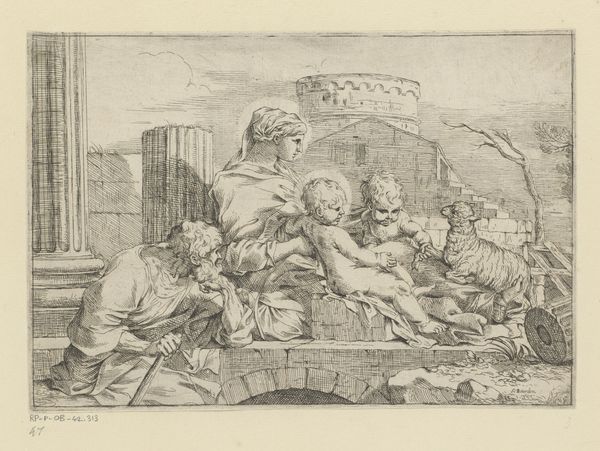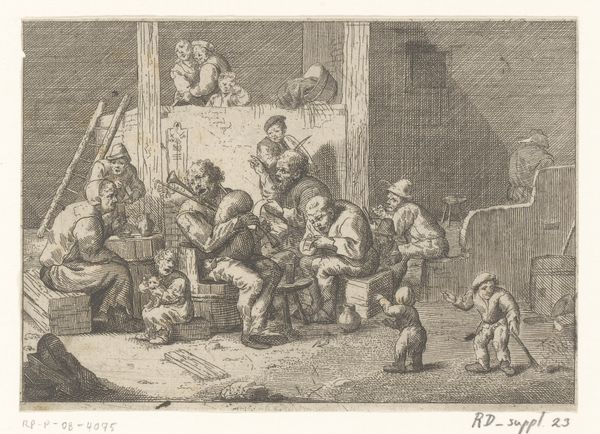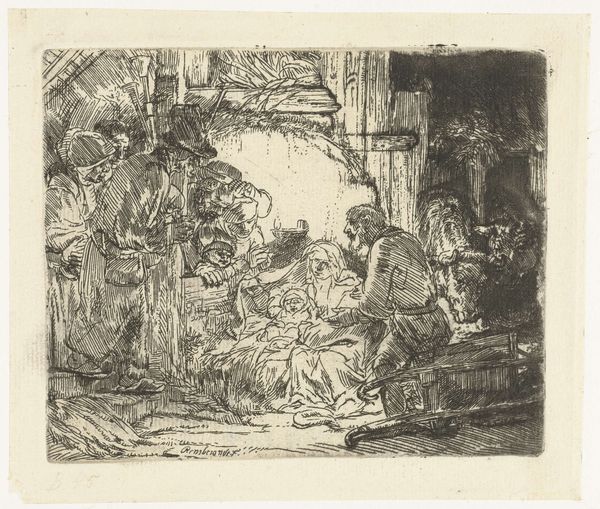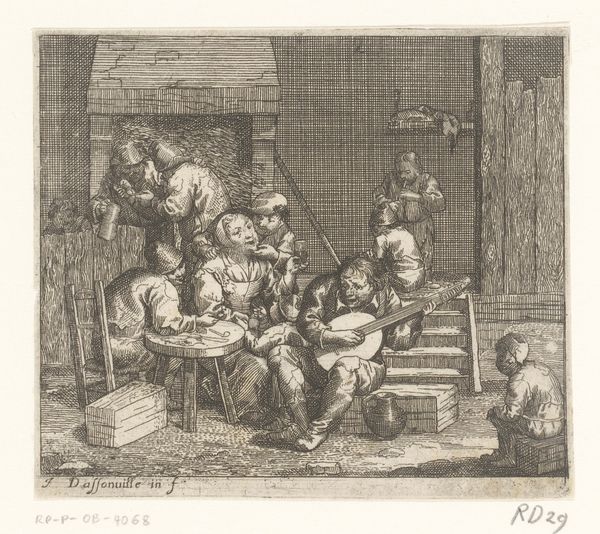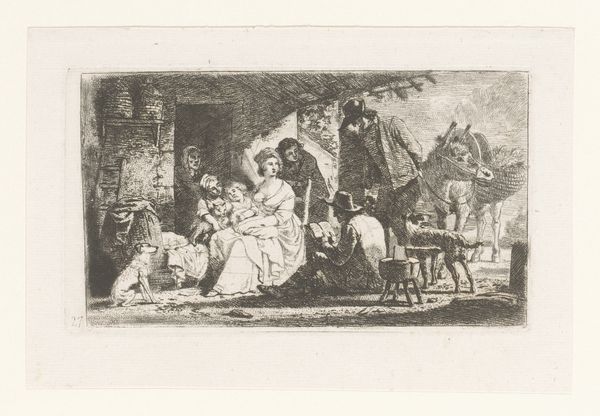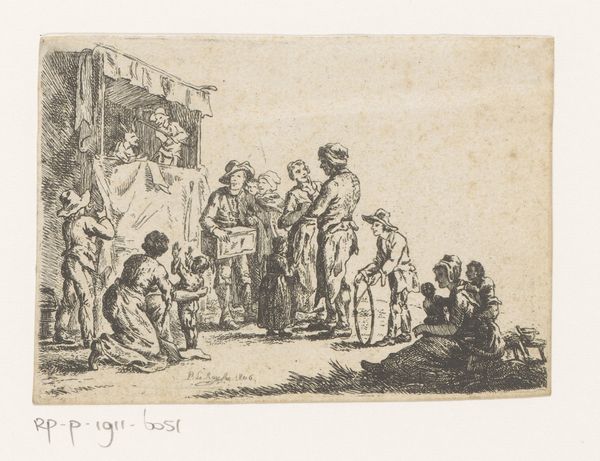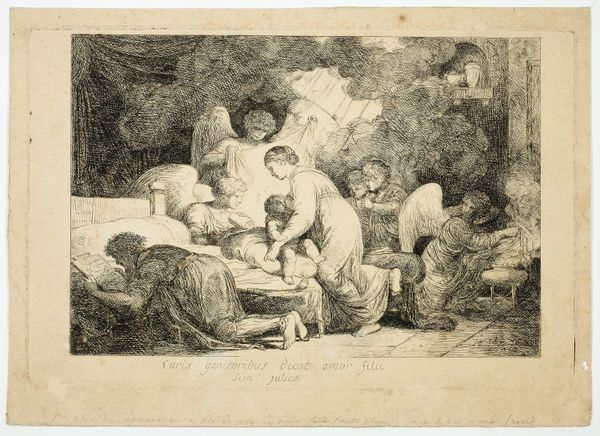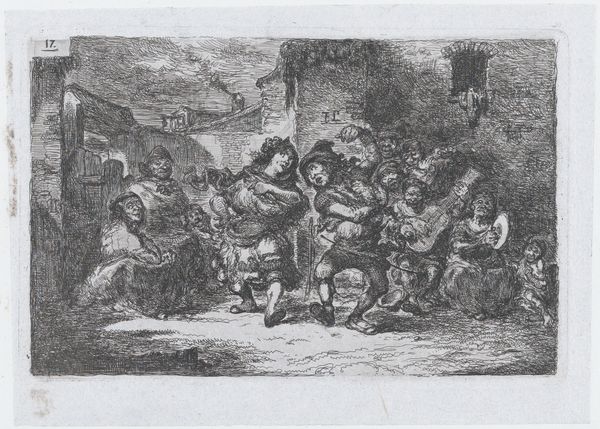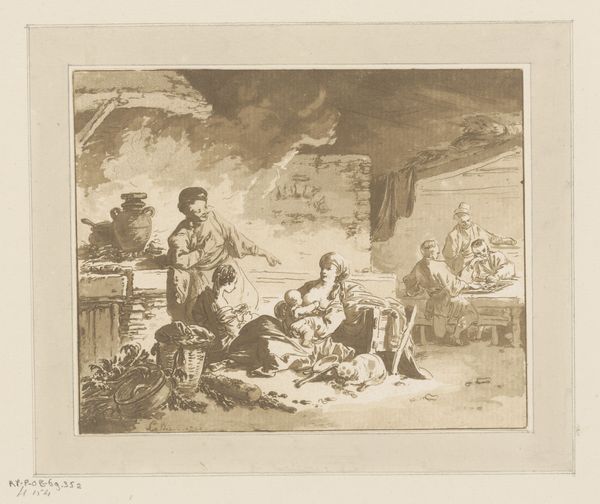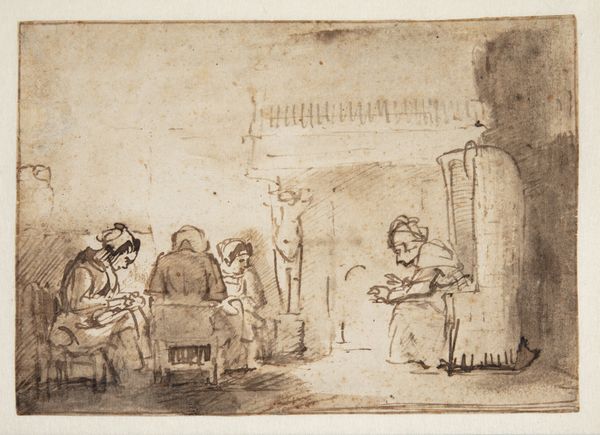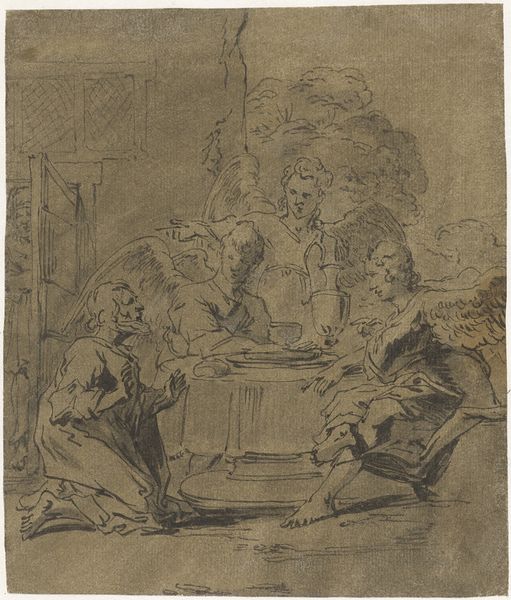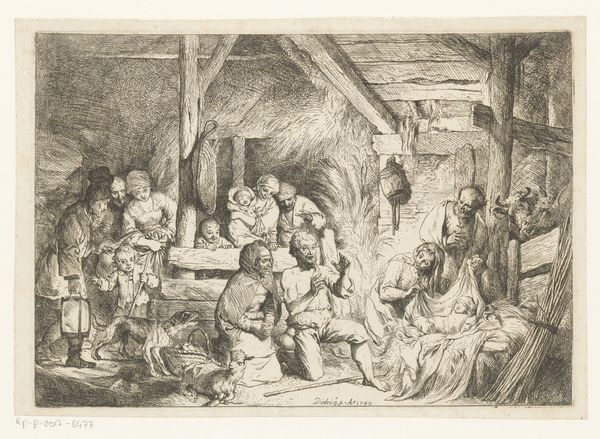
drawing, ink
#
drawing
#
ink drawing
#
baroque
#
figuration
#
ink
#
genre-painting
Dimensions: height 111 mm, width 143 mm
Copyright: Rijks Museum: Open Domain
Editor: So, here we have Jacques Dassonville's 1656 ink drawing, "Tafereel met etende figuren" - Scene with Eating Figures. It strikes me as very much of its time, almost a staged glimpse into ordinary life, but…a somewhat romanticized one? What do you see in this piece? Curator: Absolutely. Dassonville’s work operates as a cultural document reflecting 17th-century Dutch society. We see a gathering, a communal act of eating. But who has access to such communal luxury? Note the clothing, the setting...how does it situate itself within the economic hierarchies of the time? Consider gender too; how are the women depicted versus the men? Is there equality here, or subtle visual cues reinforcing social norms? Editor: That's fascinating. I hadn't really considered it that way. The women do seem… almost serving, while the men are more animated. I guess I saw it as just a scene, but you’re right, it's communicating power dynamics. Curator: Exactly. Genre scenes were popular, yes, but also tools. They normalized behaviors, created and reinforced identity. This isn't simply a record; it's a narrative being constructed. It invites questions: Who is included? Who is excluded? And what are the implications? Editor: It's much more loaded than I initially thought! It shows that everyday scenes aren't always what they seem. Thanks for pointing out those hidden complexities. Curator: My pleasure. Art’s power lies in its ability to both reflect and shape our understanding of the world, yesterday and today.
Comments
No comments
Be the first to comment and join the conversation on the ultimate creative platform.
